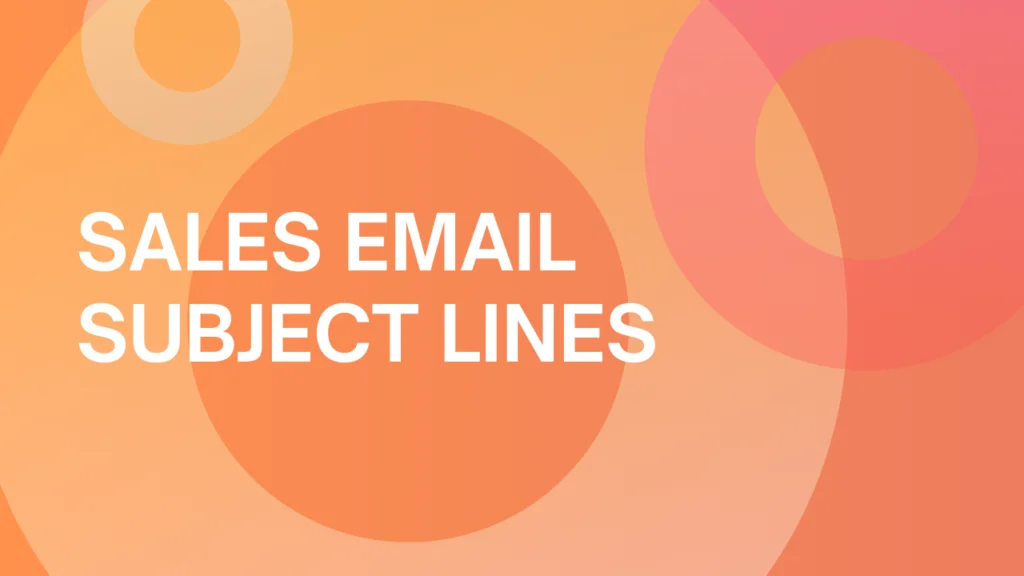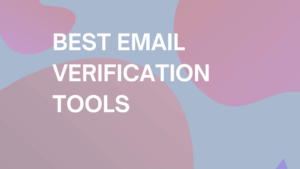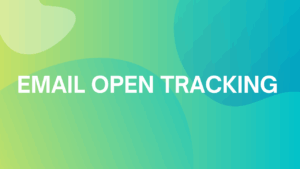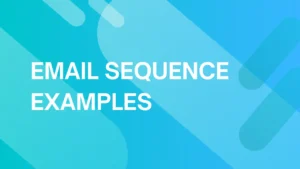
Best Sales Email Subject Lines in 2025
Nailing the right subject line is crucial because it’s your chance (maybe your only one!) to stand out in a crowded inbox.
The average professional receives 121 emails daily, competing with everything from team updates to urgent client requests and newsletter blasts.
With all this clutter, your email needs to capture immediate interest to avoid getting lost.
Elements of a great sales email subject line
If you manage to create a subject line that resonates, you’re one step closer to converting your prospect into a customer.
It’s your golden opportunity to pique their curiosity and get them to engage with your content.
Here are the key elements to focus on for creating subject lines that get noticed and opened.
a) Short and Sweet
When it comes to subject lines, brevity is your best friend. The ideal length varies across devices—mobile, desktop, and tablet—but generally, it’s best to aim for about 60 characters to ensure it doesn’t get cut off.
A concise subject line is easier to read and understand at a glance, which is crucial when your recipient is quickly scanning through a crowded inbox.
Think of it as your elevator pitch: You have just a few seconds to make an impression.
Try to convey urgency or a clear benefit in as few words as possible.
Phrases like “Exclusive Offer” or “Limited Time” can create a sense of urgency, prompting quicker opens.
b) Personalize It
Personalization is a game-changer – emails that are personalized are more likely to be opened, rather than ignored.
An easy way to do this is to include your prospect’s name in the subject line. People prefer interacting with real humans, not faceless corporations.
Beyond just the name, consider including details relevant to the recipient’s interests or past interactions.
For example, referencing a recent event they attended or a specific problem they’re facing can make your email stand out.
Using a personal email address or an alias that includes your first name can make your emails feel more genuine and relatable.
This simple tweak can transform your email from a cold pitch to a warm conversation.
Personal touches remind your recipient that there’s a real person behind the email, enhancing trust and engagement. Additionally, incorporating a digital company vault can help sales professionals securely store and manage client information. This integration ensures that personalization efforts are both effective and secure, fostering stronger relationships with clients.
c) Focus on a Problem
Your subject line should address a specific problem your prospect is facing (or one you guess they might be facing if you don’t have specific details).
This shows that you understand their challenges and are ready to offer a solution.
For example, if you know your target audience struggles with time management, a subject line like “Save 10 hours a week with our tool” directly addresses this pain point.
Whether it’s offering a solution they’ve been searching for on social media, presenting a special promotion to free up their budget, or helping them achieve their goals faster, your subject line should highlight the value you bring.
This approach makes your email relevant and compelling, increasing the likelihood that it will be opened.
By pinpointing their pain points and positioning your product or service as the answer, you create a sense of urgency and importance that can significantly boost your open rates.
The best email subject lines for salespeople
Crafting the perfect email subject line can be the difference between getting noticed and getting ignored.
A compelling subject line grabs attention and sets the stage for a successful pitch.
Here are some top examples that salespeople can use to boost their open rates and engage prospects effectively.
1. Good email subject lines for introduction
Creating a strong first impression is crucial. These subject lines are designed to catch the prospect’s eye and pique their curiosity right from the start.
| Example: “[Mutual connection] recommended I get in touch.” |
Referrals are incredibly powerful in sales. If you share a connection with your prospect, mention that person’s name in the subject line.
This instantly builds trust and makes your email more compelling.
| Example: “Hi [name], [question]?” |
Questions naturally provoke curiosity and responses. Including the prospect’s name personalizes the email and makes it stand out in a crowded inbox.
Posing a relevant question can spark their interest and pave the way for a meaningful conversation.
| Example: “Can we schedule a quick call next week?” |
Direct and to the point, this subject line clearly states your intention and respects the prospect’s time.
It’s a straightforward approach that can lead to quick scheduling and a productive dialogue.
| Example: “Have you considered [solution] for [problem]?” |
This subject line immediately addresses a potential pain point and suggests a solution, showing that you’ve done your homework.
It’s a great way to position your product or service as the answer to their needs.
| Example: “Thoughts on improving your [specific goal]?” |
By focusing on their goals, this subject line aligns your message with their interests.
It’s engaging and indicates that you’re interested in helping them achieve their objectives, which can increase the chances of your email being opened and read.
2. No-response sales subject lines
Even the best salespeople encounter the dreaded silence after sending out emails.
But don’t worry, a compelling follow-up subject line can reignite the conversation and get your prospect back on track.
| Example: “Did my last email get lost?” |
This subject line is casual yet direct, suggesting that the lack of response might have been a simple oversight.
It’s a gentle nudge that doesn’t come across as pushy.
| Example: “Still interested in [benefit/product]?” |
This approach reminds your prospect of the value you’re offering.
It’s a subtle way to pique their interest again and make them reconsider your proposal.
| Example: “Let’s connect about [prospect’s company] goals” |
Tailoring the subject line to the prospect’s specific goals or company shows you’re invested in their success.
It personalizes the email and makes it relevant to their interests.
| Example: “Quick question about [prospect’s pain point]” |
Highlighting a known pain point can catch their attention because it shows you understand their challenges.
It’s a great way to re-engage them by addressing their needs directly.
| Example: “Any updates on our last conversation?” |
This line is effective because it’s straightforward and professional.
It implies there was already an interest or agreement, nudging them to pick up where you left off.
3. Subject lines for follow-up emails
Following up is crucial in sales, but it can be tricky to strike the right balance between being persistent and respectful.
A well-crafted subject line can make all the difference in getting your email opened.
| Example: “Just checking in, [Name]” |
This subject line is friendly and personal, showing that you’re genuinely interested in their response.
It’s a soft nudge that feels conversational and non-intrusive.
| Example: “Any thoughts on our previous discussion?” |
This one invites the prospect to share their opinion, making it clear that you value their input.
It’s a great way to prompt a response and keep the conversation going.
| Example: “Following up on our last conversation” |
Direct and to the point, this subject line reminds the prospect of your previous interaction.
It’s professional and shows that you’re organized and attentive.
| Example: “Can we pick up where we left off?” |
This approach is casual yet effective, suggesting a continuation rather than a new beginning.
It implies progress and helps re-engage the prospect by referencing your prior communication.
| Example: “How can we move forward with [specific solution]?” |
By focusing on the next steps, this subject line is proactive and solution-oriented.
It shows that you’re ready to take action and are keen to help them achieve their goals, making it hard to ignore.
4. Meeting request subject lines
Requesting a meeting via email can be challenging, but the right subject line can pave the way for a successful interaction.
A compelling subject line not only grabs attention but also sets the stage for a productive conversation.
| Example: “Quick chat about [prospect’s goal]?” |
This subject line is direct and relevant, showing that you’ve done your homework and are genuinely interested in their objectives.
It positions the meeting as a quick, focused discussion on something that matters to them.
| Example: “Can we schedule 15 minutes to discuss [specific topic]?” |
By specifying the time commitment and the topic, this subject line shows respect for their time while highlighting the value of the meeting.
It’s concise and clear, making it easy for the prospect to agree.
| Example: “How about a coffee next week?” |
This casual approach suggests an informal meeting over coffee, which can feel less intimidating and more appealing.
It’s a great way to make the request feel personal and low-pressure.
| Example: “Let’s explore how we can achieve [specific benefit]” |
Focusing on the potential benefits of the meeting can entice your prospect to say yes.
This subject line highlights the value and frames the meeting as an opportunity to explore mutual gains.
| Example: “Are you available for a quick call on [day]?” |
Suggesting a specific day for the meeting shows that you’re ready to coordinate and make it happen.
It’s straightforward and makes it easy for the prospect to check their availability and respond.
5. Catchy email subject lines for sales
A catchy subject line can make all the difference in whether your sales email gets opened or ignored.
It needs to grab attention, spark curiosity, and make the recipient want to learn more.
| Example: “Unlock Your Exclusive Discount Today!” |
This subject line creates a sense of exclusivity and urgency, enticing the recipient to open the email and take advantage of a special offer.
It makes them feel like they’re getting something unique and valuable.
| Example: “Ready to Transform Your [specific area]?” |
This line piques curiosity by promising transformation and improvement in a specific area relevant to the recipient.
It positions your product or service as the key to making significant, positive changes.
| Example: “You Deserve the Best – Here’s How to Get It” |
Flattery combined with a hint of valuable information can be very effective.
This subject line appeals to the recipient’s desire for quality and excellence, prompting them to open the email to find out more.
| Example: “Sneak Peek: [Product/Service] That Will Change Your Game” |
Offering a sneak peek taps into the recipient’s curiosity and desire to be in the know.
It suggests that the email contains exclusive, insider information about something exciting and game-changing.
| Example: “Don’t Miss Out on [Benefit] – Act Now!” |
Creating a sense of urgency and potential loss can be a powerful motivator.
This subject line urges the recipient to open the email quickly to avoid missing out on a significant benefit, driving immediate action.
Email marketing tools to help you out
If you’re looking to boost your sales game, the right email marketing tools can make a world of difference.
These tools not only help you craft and send effective emails but also track and analyze their performance.
Here are some top-notch email marketing tools and a few must-read resources to sharpen your sales skills.
1. Mailchimp
Mailchimp is a powerhouse in email marketing, offering an easy-to-use platform with robust features.
From designing beautiful emails to automating your campaigns, Mailchimp has got you covered.
Key Features:
- User-friendly email builder
- Automation workflows
- Detailed analytics
- A/B testing
- Integration with various apps
Why You’ll Love It: Mailchimp’s intuitive interface and comprehensive features make it a go-to choice for both beginners and pros.
Its powerful analytics help you understand your audience and optimize your campaigns.
2. HubSpot
HubSpot offers a full suite of marketing tools, with its email marketing capabilities standing out.
It’s perfect for those looking to integrate email marketing into their broader sales and marketing strategy.
Key Features:
- Drag-and-drop email editor
- Automated workflows
- Advanced segmentation
- CRM integration
- In-depth analytics
Why You’ll Love It: HubSpot’s seamless integration with its CRM allows for highly personalized and targeted email campaigns. Plus, its educational resources are top-notch, helping you become a better marketer.
3. ConvertKit
ConvertKit is designed with creators in mind. It’s an excellent tool for bloggers, podcasters, and small business owners who want to grow their audience and boost engagement.
Key Features:
- Visual automation builder
- Subscriber tagging
- Seamless integrations
- Customizable forms and landing pages
- Powerful analytics
Why You’ll Love It: ConvertKit’s focus on simplicity and powerful automation tools makes it easy to build meaningful connections with your audience, driving higher engagement and conversions.
4. ActiveCampaign
ActiveCampaign combines email marketing, automation, and sales CRM into one powerful tool. It’s ideal for businesses looking to create sophisticated, automated email campaigns.
Key Features:
- Advanced email automation
- CRM integration
- Dynamic content
- Split testing
- Robust reporting
Why You’ll Love It: ActiveCampaign’s advanced automation capabilities and CRM integration allow for highly personalized and effective email marketing campaigns that drive results.
5. Sendinblue
Sendinblue is a versatile email marketing tool that’s great for small to medium-sized businesses. It offers a wide range of features at an affordable price.
Key Features:
- Drag-and-drop editor
- SMS marketing
- Marketing automation
- Transactional emails
- Detailed analytics
Why You’ll Love It: Sendinblue’s affordability combined with its comprehensive feature set makes it a fantastic choice for businesses looking to maximize their email marketing efforts without breaking the bank.
To truly excel in sales, it’s essential to constantly refine your skills and stay informed about the latest strategies.
The right books can offer valuable insights and practical techniques that you can apply directly to your work.
Here are five must-read books that will help you understand the psychology of selling, develop effective strategies, and ultimately boost your sales performance.
- “Influence: The Psychology of Persuasion” by Robert B. Cialdini – This classic book delves into the psychology of why people say “yes” and how to apply these understandings to your sales strategy.
- “To Sell Is Human: The Surprising Truth About Moving Others” by Daniel H. Pink – Daniel Pink explores the new science of selling and reveals the keys to successfully moving others in an increasingly digital world.
- “SPIN Selling” by Neil Rackham – Based on extensive research, this book provides practical insights and techniques for complex sales processes, focusing on the SPIN (Situation, Problem, Implication, Need-payoff) strategy.
- “The Challenger Sale: Taking Control of the Customer Conversation” by Matthew Dixon and Brent Adamson – This book argues that the best salespeople don’t just build relationships; they challenge their customers by providing unique insights and solutions to their problems.
- “New Sales. Simplified.” by Mike Weinberg – A straightforward guide to new business development, this book covers everything from prospecting to closing deals, with practical tips and strategies for sales success.
Learning from the experts is a great way to master the art of email marketing and boost your sales performance.
Final thoughts
Mastering email marketing can feel like a daunting task, but with the right tools and strategies, you can turn your emails into powerful sales engines.
The key is to focus on creating compelling subject lines, personalizing your messages, even when using cold email templates, and addressing the specific needs and pain points of your prospects.
Stay committed, keep learning, and don’t be afraid to try new things. Your next big sales breakthrough could be just an email away!



